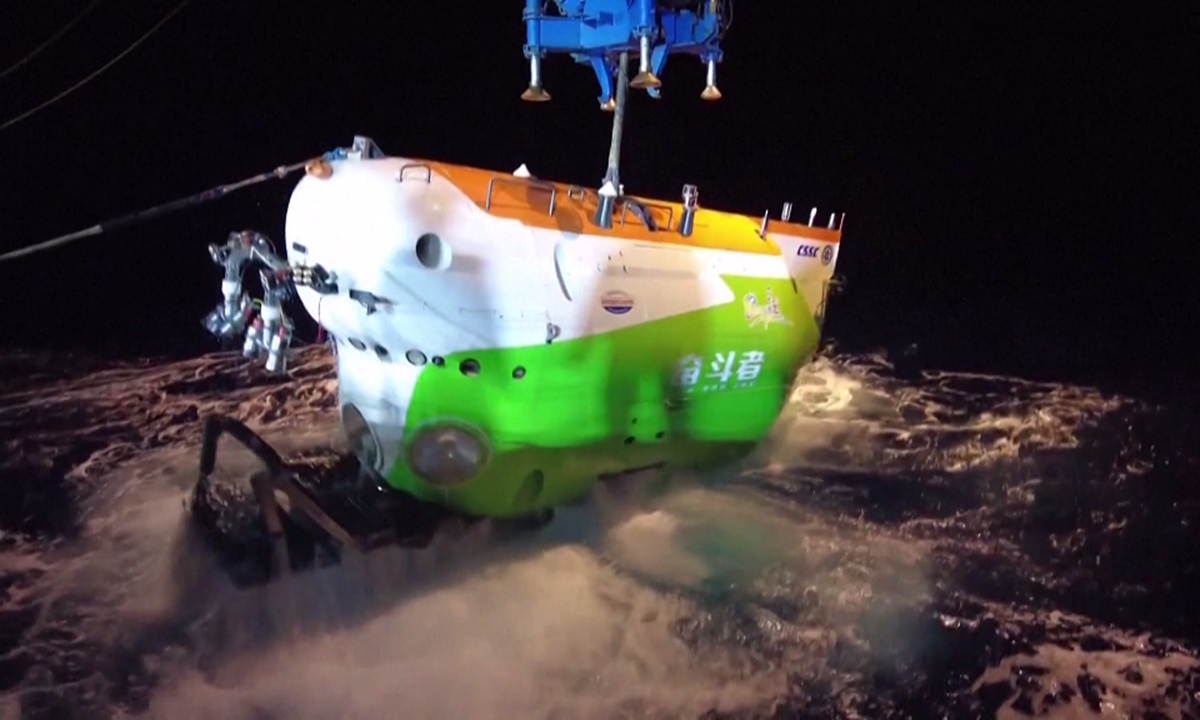China’s “Fendouzhe” or “Striver” deep-sea manned submersible set history by operating for 10 hours straight at the deepest part of the Diamantina Trench in the southeastern Indian Ocean.
Following the completion of the operation, the vessel was recovered by the scientific research ship Tansuo-1 on January 22.
The fact that a submersible has successfully navigated to the trench’s deepest point for the first time in human history is vital for developing worldwide abyssal science. Furthermore, this has sped up the scientific study of the trench system, reported State-run Global Times.
On October 6, 2022, the Institute of Deep Sea Science and Engineering, part of the Chinese Academy of Sciences (CAS), launched the abyss expedition team, which comprised 56 participants from some of China’s top universities, including Shanghai Jiaotong University and Tongji University.
The team then performed two joint Chinese-Singaporean scientific research missions at the Kermadec Trench. It is currently working on a third mission at the Diamantina Trench, its first formal expedition to the southeast Indian Ocean since it was formally placed into operation.

China’s Fendouzhe manned submersible had completed 159 dives as of January 22. Of those, 25 were at depths greater than 10,000 meters.
The team of the abyss scientific expedition not only found numerous iron and manganese nodules at the bottom of the Diamantina Trench and created markers reading “Happy Year of the Rabbit” at a depth of 5,810 meters in the trench.
After making 22 dives in the area, the submersible will, as scheduled, return to Sanya city in early March 2023.
In 2020, China broadcast live footage of its submersible docked at the Mariana Trench as part of a historic expedition into the world’s deepest underwater valley.
During that mission, the Fendouzhe, also known as Striver, which had three researchers on board, plunged more than 10,000 meters (about 33,000 ft) into the submarine trench in the western Pacific Ocean.
The first explorers reached the Mariana Trench in 1960 on a brief expedition, following which no expeditions were conducted until Hollywood filmmaker James Cameron completed the first solo expedition to the bottom in 2012.
https://www.youtube.com/watch?v=P5IhG_6dXzo
Deep Sea Resources
The submersible is outfitted with robotic arms for collecting biological samples and sonar “eyes” that use sound waves to locate surrounding objects.
Due to the weight of the equipment it carries, engineers created a bulbous forehead-shaped protrusion that contains buoyant materials to assist in keeping it balanced.
Fendouzhe, China’s third deep-sea manned submersible, can track various marine species and distribution patterns. China has increased its attempts to seek deep marine resources to access historically untapped minerals.
When the organisms are brought to the surface, the abrupt shift in pressure, temperature, and chemical environment frequently cause physiological changes. As a result, a laboratory on the ocean floor enables a more accurate analysis of deep-sea species under harsh conditions.
In October 2022, Chinese researchers made a significant advancement toward long-term unmanned research in the deep sea when they successfully deployed a deep-sea in-situ scientific experiment station for testing in the South China Sea.
In late May 2021, President Xi Jinping encouraged the Chinese scientific community to make strides in four vital frontiers, one of which is the ocean, in a speech to China’s top engineers and scientists.
Since 2013, Xi has emphasized the importance of sea study when he delivered the famous phrase, “Care about the ocean, understand the ocean, and strategically manage the ocean.”
Chinese scholars have frequently emphasized that China is one of the few countries with “full ocean depth capability,” which means it can conduct routine manned missions at any ocean depth.
Scientists worldwide have been undertaking ocean drilling excursions from the Arctic to Antarctica since the middle of the 20th century. China joined the Ocean Drilling Program, an international group devoted to carrying out fundamental research on the ocean floor, in 1998.
According to the National Institute for South China Sea Studies, China, a latecomer to the field, effectively recovered ocean basin sediment core samples from the South China Sea in 1999, the first samples of their sort from the region.
The samples provided important information on the region’s climate and geological formation over 30 million years ago. China currently actively participates in the largest international scientific ocean drilling effort, the International Ocean Discovery Program.
- Contact the author at ashishmichel(at)gmail.com
- Follow EurAsian Times on Google News